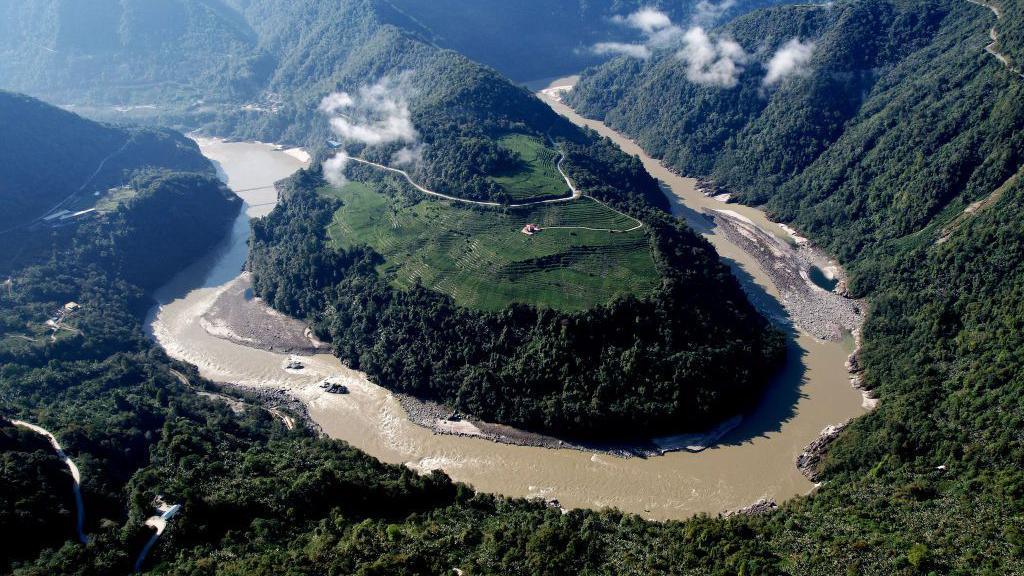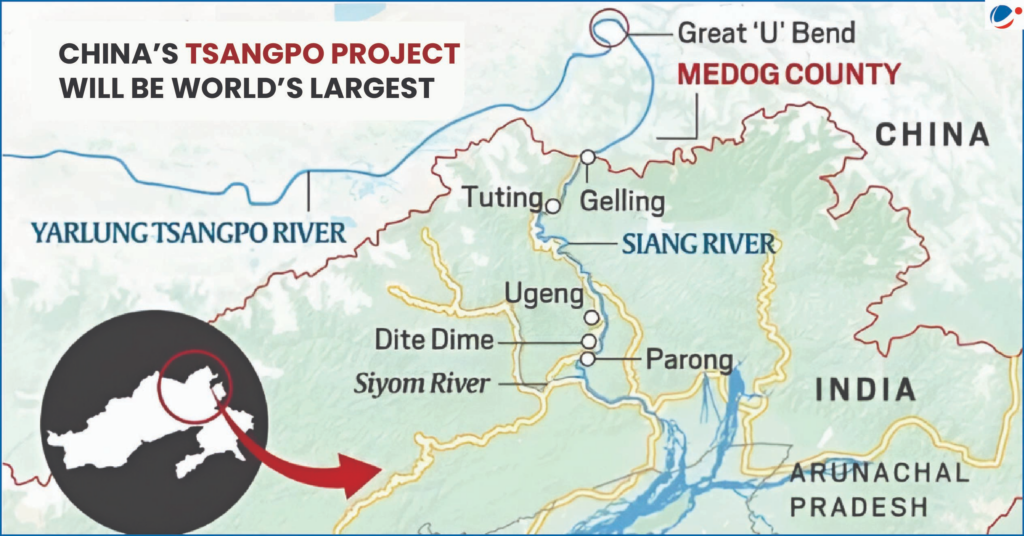
- World’s largest hydropower dam on the Yarlung Tsangpo River project will have five cascade hydropower stations and is estimated to produce 300 million megawatt hours of electricity every year.
- Pema Khandu, the Chief Minister of Arunachal Pradesh, has stated that the Yarlung Tsangpo River dam can prove to be an existential threat to the population inhabiting the region and can be used as a “water bomb” by China.
- The 1977 Convention on the Law of the Non-navigational Uses of International Watercourses’ Article 5 states the norms of equitable water usage for the Watercourse States; however, China voted against the Convention.
There have been a plethora of conflicts and geopolitical grapples over gaining control over resources, especially natural resources. Water is one of the many natural resources that has been weaponised as a form of non-contact warfare: Water Wars. China has resorted to Hydro-Politics by weaponising the river Brahmaputra against India. Water is an essential resource for sustenance of life, and China’s control over the Tibetan Plateau gives it a significant advantage over water maps of South Asia, as many rivers, including Indus and Brahmaputra, originate in Tibet. This thus makes China an upstream water controller, and India a downstream riparian.
Recently, China’s Premier Li Qiang has presided over a ceremony marking the initiation of the construction of the world’s largest hydropower dam on the Yarlung Tsangpo River. This project is estimated to receive an investment of around 1.2 trillion Yuan (around USD 167.1 billion). This project, which China’s Premier called as the “Project of the Century,” will have five cascade hydropower stations and is estimated to produce 300 million megawatt hours of electricity every year. The building of this dam has received serious concerns from India. Pema Khandu, the Chief Minister of Arunachal Pradesh, has stated that the dam can prove to be an existential threat to the population inhabiting the region and can be used as a “water bomb” by China.

The construction of this megadam is an undesirable act as it can unleash environmental havoc in the downstream regions of North-eastern parts of India, which can also cause significant damage to life and settlements. It has thus also been criticised by many environmentalists for its adverse effects in the Tibetan Plateau. China’s upstream activities have also triggered flash floods in India. In 2017, China also utilised water wars as a form of coercive diplomacy wherein, in breach of 2 bilateral accords, China punitively denied providing hydrological data to India. This action paralysed the downstream flood early warning systems in India, which resulted in numerous deaths. China thus uses water wars to put pressure on India, which in the long term also helps support its claims over Arunachal Pradesh, as China, as an upstream controller, can manipulate transboundary flows of water, thus strengthening its false claims over Arunachal Pradesh. India has, however, taken up the Siang Multipurpose Project to counter the adverse effects of this Chinese project.
With a lot of carbon emissions being generated from the country, China is exploring renewable energy options, hydropower being one of them. China is thus strategically utilising its geographical position as an upstream riparian power. This dam can cause floods or droughts to countries like India and Bangladesh downstream. The 1977 Convention on the Law of the Non-navigational Uses of International Watercourses’ Article 5 states the norms of equitable water usage for the Watercourse States; however, China voted against the Convention. China aims to become a regional hegemon, and hydro-hegemony can be considered one of its many tactics to establish its dominance. This dam is thus not just an infrastructural project, but also a geopolitical tool that weaponises water.
References:
- https://www.bbc.com/news/articles/c4gk1251w14o
- https://www.hindustantimes.com/world-news/china-starts-building-167-billion-mega-dam-on-brahmaputra-amid-indias-water-bomb-concern-101752985879585.html
- https://www.theguardian.com/world/2025/jul/21/china-starts-building-world-biggest-hydropower-dam-yarlung-tsangpo-river-tibet
- https://legal.un.org/ilc/texts/instruments/english/conventions/8_3_1997.pdf
Vibha Hareesh has a Bachelor’s Degree in International Relations from Jindal Global University. She has a strong interest in geopolitics, international relations, and security studies. Views expressed are the author’s own.
